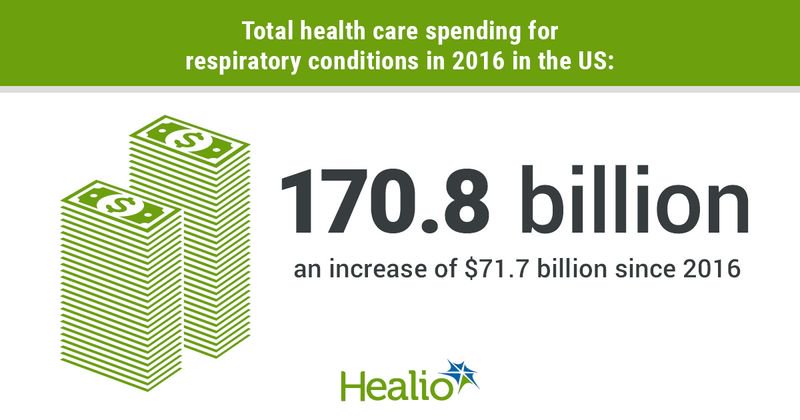US health care spending on respiratory conditions rose dramatically in recent years
U.S. health care spending on respiratory conditions, especially chronic conditions like asthma and COPD, increased dramatically from 1996 to 2016, researchers reported in the American Journal of Respiratory and Critical Care Medicine.
“The U.S. spends more on health care than any other country in the world, without better outcomes. Spending on respiratory diseases is no exception,” Kevin I. Duan, MD, MS, from the division of pulmonary, critical care and sleep medicine at the University of Washington and the Center of Innovation for Veteran-Centered and Value-Driven Care at VA Puget Sound Health Care System, Seattle, and colleagues wrote. “However, currently available estimates of spending on respiratory diseases, while providing an important starting point, provide an incomplete overview due to limitations.”

Researchers utilized data from the Institute for Health Metrics and Evaluation’s Disease Expenditure Project database of annual estimates in spending for 38 age and sex groups, seven types of care and three payer types.
The researchers focused on health care spending from 1996 to 2016 for 11 respiratory conditions:
- asthma;
- COPD;
- interstitial lung disease and sarcoidosis;
- lower respiratory tract infections;
- pneumoconiosis;
- tobacco intervention;
- trachea, bronchus and lung cancers;
- tuberculosis;
- upper respiratory tract infections;
- whooping cough; and
- other chronic respiratory diseases.
In 2016, total spending across all respiratory conditions was $170.8 billion, which increased by $71.7 billion from 1996. This represented an annualized growth rate of 2.7%.
In 2016, the highest U.S. spending was for asthma ($35.5 billion) and COPD ($34.3 billion) followed by lower respiratory tract infections ($32.2 billion) and upper respiratory tract infections ($12.6 billion). Asthma spending contributed to 20.8% of all respiratory diseases spending and COPD spending contributed to 20.1%. For asthma, the most expensive care type was prescribed pharmaceuticals, which accounted for $17 billion (48%) of all spending. For COPD, pharmaceutical ($9.8 billion) and inpatient care ($9.9 billion) spending were similar with both care types, contributing to 57.3% of all COPD spending.
Increasing service price and intensity was associated with an increase $50.4 billion (81.4%) from 1996 to 2016.
“In summary, U.S. health care spending on respiratory conditions increased significantly from 1996 to 2016,” the researchers wrote. “The spending increase was most associated with higher service price and intensity, which supports policy reforms targeting prices as an important approach to contain spending growth.”
